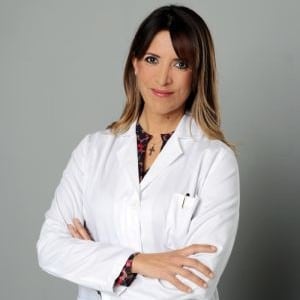Varicose veins are deformed and dilated superficial veins, usually found in the legs.
The function of veins is to collect blood and carry it back to the heart, thanks to their valves that keep the blood flowing in the right direction. When the walls of the veins and their valves weaken, the blood does not flow well and causes an accumulation of blood inside the leg which causes the veins to dilate and can become visible and palpable.
Varicose veins are a very common condition, affecting approximately one in three people. This prevalence can lead to the spread of incorrect information and false beliefs. In this article, Dr. Martín Herrero, specialist in Angiology and Vascular Surgery, dispels eight myths about this pathology.
Myth 1: Varicose veins are only an aesthetic problem.
Although varicose veins begin as an ailment that visually disfavors the leg, it is really a pathology caused by a malfunction of the return veins. They appear due to a failure in the valves of the vein, which causes its dilation because of the accumulated blood.
That is why if they are not treated, they can lead to health complications.
Myth 2: Crossing your legs causes varicose veins.
Varicose veins are caused by damaged valves, and crossing your legs does not damage them. Therefore, this posture does not cause varicose veins.
However, good blood circulation is key to healthy legs, and crossing your legs creates pressure and contraction, worsening it.
Myth 3: Only women get varicose veins
While it is true that this pathology has a higher incidence in women due to the hormonal factor (between 3 and 5 times more), men also suffer from varicose veins: specifically 35% of Spanish men.
The belief that only women suffer from varicose veins is due to the fact that men tend to pay less attention to them, as they consider it to be something purely aesthetic, they are uninformed and it does not affect their daily lives. That is why they tend to resort to the health professional only when the varicose veins are large and have symptoms, which puts them at greater risk.
Myth 4: If varicose veins do not hurt, there is no need for surgery.
Although sometimes varicose veins may not be a threat to health, sometimes they can be dangerous or may become so with the passage of time and increased risk factors.
To find out, we must schedule an appointment with a specialist in Angiology and Vascular Surgery.
Myth 5: Pregnancy causes varicose veins.
Pregnancy can affect blood flow and worsen the condition of the veins due to increased pressure on the pelvis and legs. This condition is usually temporary and the veins eventually disappear.
If varicose veins were present prior to pregnancy, they may increase during this period. To control them it is advisable to wear compression stockings and in some cases surgery is recommended before or after pregnancy.
Myth 6: Massages combining hot and cold water are beneficial.
Heat causes dilation of the veins, so they are not recommended. It is better to do massages or showers only with cold and lukewarm water, as it contracts the most superficial veins. It is also for this reason that the symptoms of varicose veins improve in winter due to the lower temperatures.
Mito 7: Athletes get varicose veins in their extremities.
Excessive physical exercise causes a greater volume of blood to reach the arteries in order to cover the oxygen needs of the muscles. With the passage of time, this causes a greater development of the veins, dilating them, and sometimes they are mistaken for varicose veins.
Exercising is important to improve circulation, as it activates the return circulation and the blood does not remain stagnant, thus preventing the appearance of varicose veins.
Myth 8: The only treatment is surgery.
Not all varicose veins are the same and, therefore, the treatment may differ from one patient to another. Currently there are several intervention options depending on the type and degree of varicose veins. There are minimally invasive techniques with results identical to those of surgical operations, such as endovenous laser and radiofrequency.
At Paracelso Sagasta we have a highly specialized team with the latest technology for the detection and treatment of varicose veins. Our specialists in Angiology and Vascular Surgery will study your medical history, assess your symptoms and perform an examination in order to evaluate your case and set a personalized therapy. Make an appointment now.

